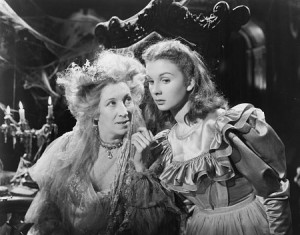Screen Talks – great films and great debates!
We’re all really excited to begin our season of collaboration with the Exeter Picture House Cinema, and so the title of our first ‘Page to Screen’ feature is particularly appropriate. Great Expectations is one of the great Victorian novels, epitomising all the best features of Charles Dickens’ literary flair, with unforgettable characters and a relentlessly gripping plot.
Dickens is perhaps one of the most frequently adapted writers – his stories have inspired countless film productions – and when you read those original novels, it’s not hard to see why they lend themselves so vividly to the big screen. Indeed, Dickens even inspired visual adaptations before the invention of the modern cinema, as can be seen in this short film from the British Film Institution ‘Dickens and the Magic Lantern’ – the film features Exeter University’s Dr. John Plunkett as well as Bill Douglas Centre curator Phil Wickham:
http://www.youtube.com/watch?v=omuDMHj0TZY
Great Expectations itself has been repeatedly adapted for film and television – and a fresh reworking from director Mike Newell, with Helena Bonham Carter as Miss Havisham is due for release in late November 2012. However, for countless cinema fans, it is this 1946 version, directed by David Lean, that is the definitive adaptation, by which all others must be compared.
However, while Great Expectations is an incredibly well-known classic, there are plenty of surprises in store – and with that in mind, we’ve rounded up some of the more unusual facts about the life and times of Charles Dickens…
- One of Dickens’ most enduring collaborations was with the artist Hablot Knight Browne, who was nicknamed ‘Phiz’ to complement Dickens’ own nickname ‘Boz’. Browne was responsible for illustrating the now canonical pages of David Copperfield, Bleak House, The Pickwick Papers, Nicholas Nickleby and The Old Curiosity Shop, and the two men worked together for twenty-four years. However, the relationship came to an acrimonious end in 1859 – ostensibly because Dickens was displeased with Browne’s work for A Tale of Two Cities – but several biographers have suggested the split was provoked when Browne expressed his sympathy for Dickens’ estranged wife, Catherine. They never worked together again.
- Dickens kept a pet raven – ‘Grip’ – who features as a character in his 1841 mystery Barnaby Rudge. The story was reviewed by Edgar Allan Poe, who was particularly taken by the talking bird, and commented that the raven should have been given a bigger role within the plot. It has even been suggested that Grip inspired Poe’s famous ‘The Raven’ poem, which was published in 1845.
- Perhaps as a consequence of his impoverished childhood, Dickens found it almost impossible to refuse a professional engagement, and kept up a punishing schedule of writing and lectures. This took a direct toll on his health, and by the time of his final American lecture tour in 1868, he was physically exhausted and subsisting on a liquid diet, including a dish of rum and cream for breakfast, a pint of champagne at 3pm, and a concoction of eggs beaten in sherry before his evening performance.
- Miss Havisham is one of Dickens’ most striking and bizarre creations, but she might actually have had a real-life source of inspiration. The Australian heiress, Eliza Emily Donnithorne, was scandalously jilted on her wedding day in 1856. She allowed her wedding breakfast to decay on the dining table, and refused to leave her house, finding some solace in her books and pets. On her death in 1886, she left most of her estate to her housekeeper, but insisted on ‘an annuity of £5 for each of my six animals and £5 for all my birds.’
- Dickens continues to be a highly collectable author. A first edition of Great Expectations will set you back somewhere in the region of £80,000, and his writing desk was sold in 2008 for £433,250. Even a toothpick used by Dickens has fetched nearly £7,000 at auction in 2009.
If this has sparked your interest, then why not pay a visit to the Bill Douglas Centre? The BDC is a real treasure-trove of cinematic history, including some wonderful Dickens related curios, such as this novelisation of the Lean film:
http://billdouglas.ex.ac.uk/eve/results.asp?item=35474&keywords=dickens
You can find out more about the Bill Douglas Centre here:
You might even find something that inspires an idea for a future ‘Screen Talk’ – if so, please do get in touch via this blog or our twitter account at @ExeScreen_Talks – we really look forward to hearing from you!

